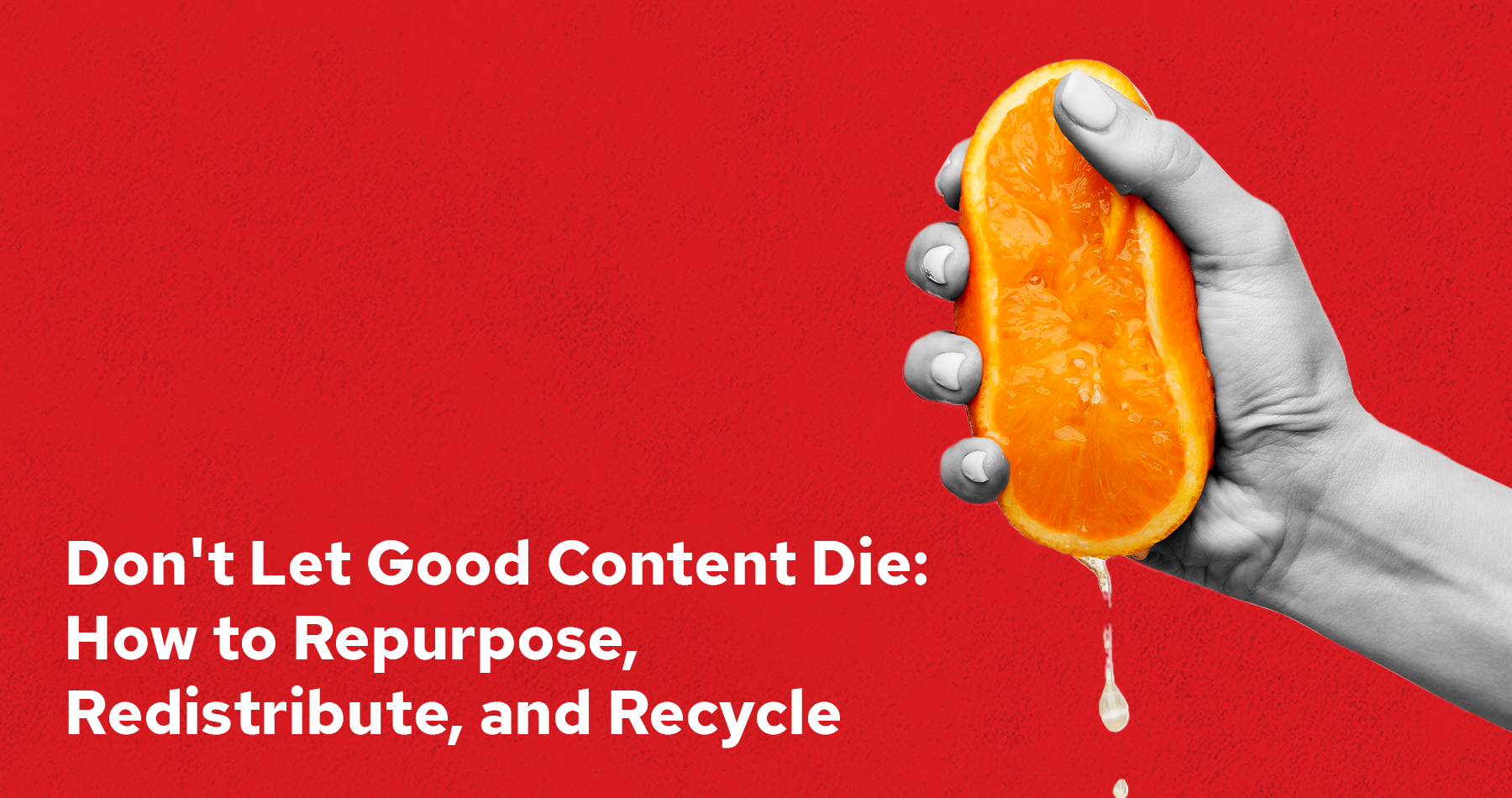
Content is still king. Or queen. Well, let’s be honest—content is the whole royal family and the castle they live in.
You probably know this already. You’ve likely invested time and resources into developing blogs, white papers, case studies and maybe even rocking a pretty decent social media strategy. But if you’re just hitting “publish” and calling it good… you’re spending your hard-earned resources and time putting something onto your website and leaving to die.
In my work as a fractional CMO, I help brands develop strategy and efficiency. One of my favorite ways to help clients is giving them an easy (and often overlooked) content strategy that improves both.
Reduce, reuse, recycle isn’t just a smart strategy for paper and soda cans. It’s a smart strategy that I like to call the content “Circle of Life.”
In this blog we talk about why content matters for your brand and how you can multiply your efforts without burning out your team or budget.
Content does way more than fill up space on your website. When used intentionally it:
But here’s the kicker: none of that happens if your content doesn’t go anywhere.
If you post content—even high-value content—just one time in one place, your effort will die there.
There’s simply too much digital noise. You’re competing with algorithms, attention spans, memes and all the nonsense on the internet. To break through, you need a system for publishing and recirculating your content over weeks and months.
That’s how you establish real thought leadership.
Let me give you a real-life example. A client of mine went from 33 LinkedIn connections to over 3,500 in under a year—and started trending on LinkedIn in their area of subject matter expertise. Their secret? Creating a content cycle. They didn’t post once and disappear; they repurposed, distributed and reinvigorated their content at regular intervals throughout six months.
Here’s your step-by-step strategy for taking one blog post or white paper and turning it into a full-blown marketing ecosystem:
Each platform has its own rules, quirks and best practices. Learn them or have someone in your organization who’s familiar with each and can help.
Even if you think you know where your audience lives, confirm it. Use analytics to study your engagement. What works for a B2B SaaS brand, for example, won’t necessarily work for a brick and mortar store or local franchise.
Let’s say you write a killer blog post. Most folks post it once on their site, maybe share it on LinkedIn and then move on.
Don’t do that.
Instead, map out a repurposing and redistribution schedule:
Create a simple spreadsheet or project management board. This way, you stay organized and make sure every piece of content gets its full mileage.
Track:
This process what transforms content in a powerful tool for SEO, thought leadership and brand awareness—not just one shot in the dark.
Let’s break this down further. Say you’ve written a blog post about “The Future of AI in Marketing” Here’s how that one blog could be reborn:
And that’s just from one article. Imagine what your content could do if you gave it some room to run.
I get it. This sounds great in theory, but you’re short on time, the team’s overwhelmed and no one knows where to start.
That’s exactly why so many organizations bury their content in the archives and start from scratch every time. If you think what we’ve suggested is time intensive, remember: It’s way easier, faster and cheaper to take one piece of great content and transform it than to research and write new content every few weeks.
When you treat content like a renewable resource—and implement a smart system for reuse and distribution like we’ve outlined above—you’ll get more visibility, more engagement and more ROI without burning through your bandwidth.
You worked hard on that blog, white paper or case study—Don’t let it fade into the digital abyss. Give it a second, third and fifteenth life.
The smartest brands don’t create more content. They create better systems for using the content they already have.
If your organization is ready to stop wasting content and start building a scalable content strategy—one that supports brand growth, thought leadership, and measurable results—we would love to help.
Content isn’t one-and-done, and neither is your brand. Let’s build something that lasts.